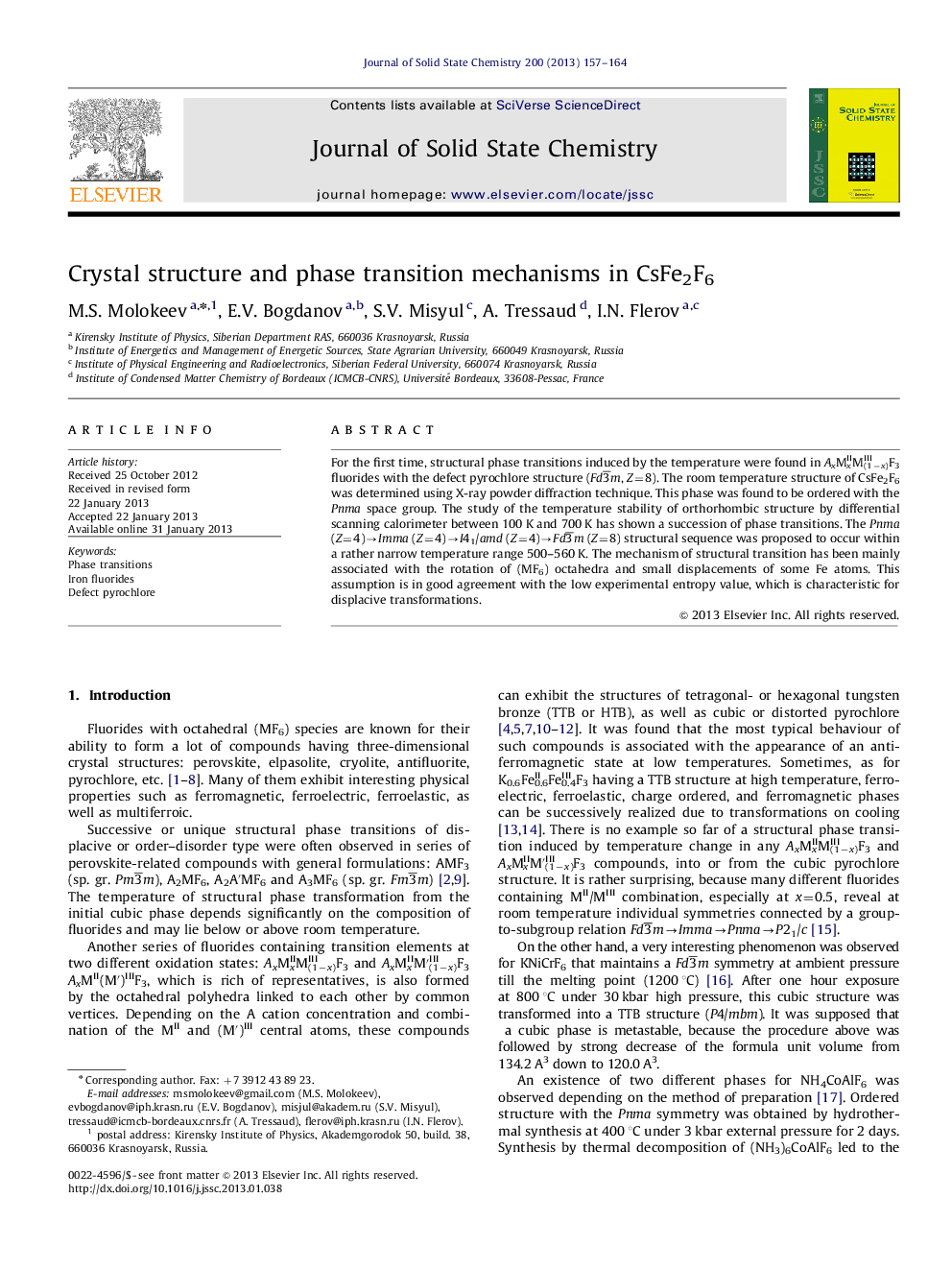| Article ID | Journal | Published Year | Pages | File Type |
|---|---|---|---|---|
| 1331204 | Journal of Solid State Chemistry | 2013 | 8 Pages |
For the first time, structural phase transitions induced by the temperature were found in AxMxIIM(1−x)IIIF3 fluorides with the defect pyrochlore structure (Fd 3¯m, Z=8). The room temperature structure of CsFe2F6 was determined using X-ray powder diffraction technique. This phase was found to be ordered with the Pnma space group. The study of the temperature stability of orthorhombic structure by differential scanning calorimeter between 100 K and 700 K has shown a succession of phase transitions. The Pnma (Z=4)→Imma (Z=4)→I41/amd (Z=4)→Fd 3¯m (Z=8) structural sequence was proposed to occur within a rather narrow temperature range 500–560 K. The mechanism of structural transition has been mainly associated with the rotation of (MF6) octahedra and small displacements of some Fe atoms. This assumption is in good agreement with the low experimental entropy value, which is characteristic for displacive transformations.
Graphical abstractMechanism of phase transition between the HT cubic form of CsFe2F6 at 573 K (left) and the room temperature orthorhombic form at 298 K (right). The grey rectangles are clusters of five FeF6 octahedra.Figure optionsDownload full-size imageDownload as PowerPoint slideHighlights► Structural transition found for the first time in CsFe2F6 with defect pyrochlore type. ► FeII and FeIII atoms are ordered in room temperature Pnma form of CsFe2F6. ► Pnma(Z=4)→Imma(Z=4)→I41/amd(Z=4)→Fd-3m(Z=8) transition sequence is proposed. ► Structural transition due to rotation of MF6 groups+small displacements of Fe atoms. ► The low value of the entropy is in agreement with a displacive-type transition.
